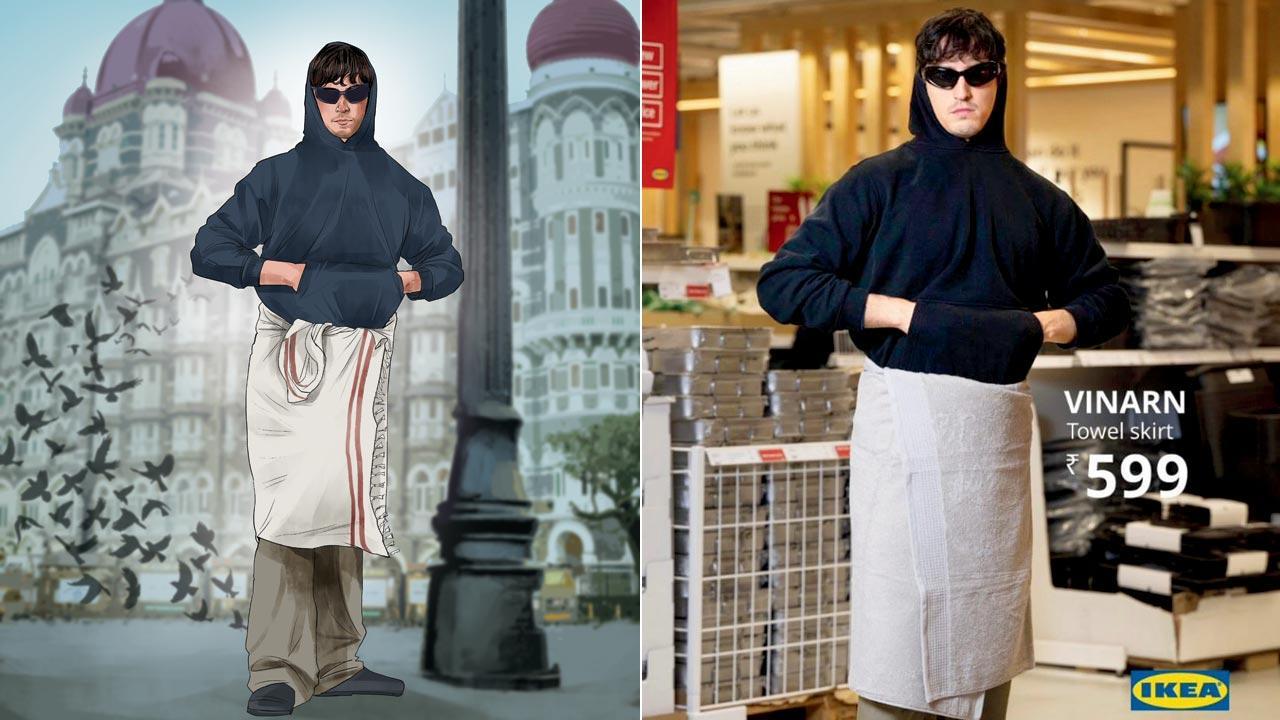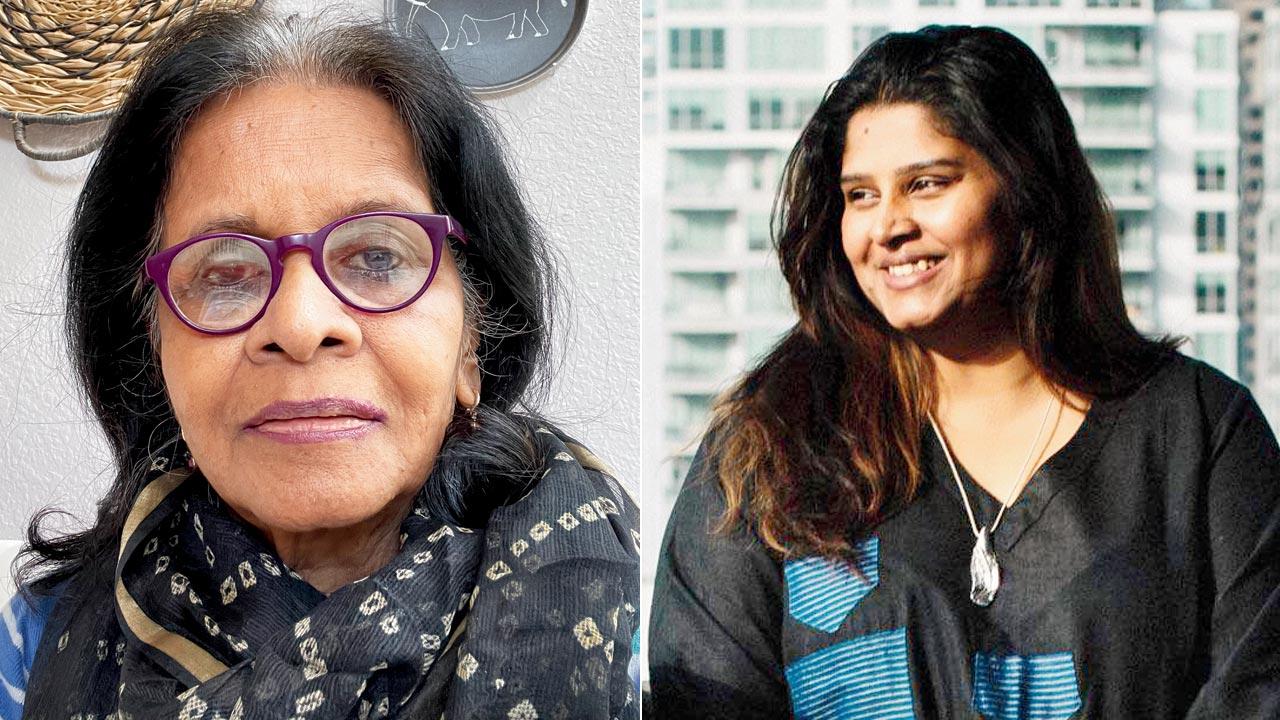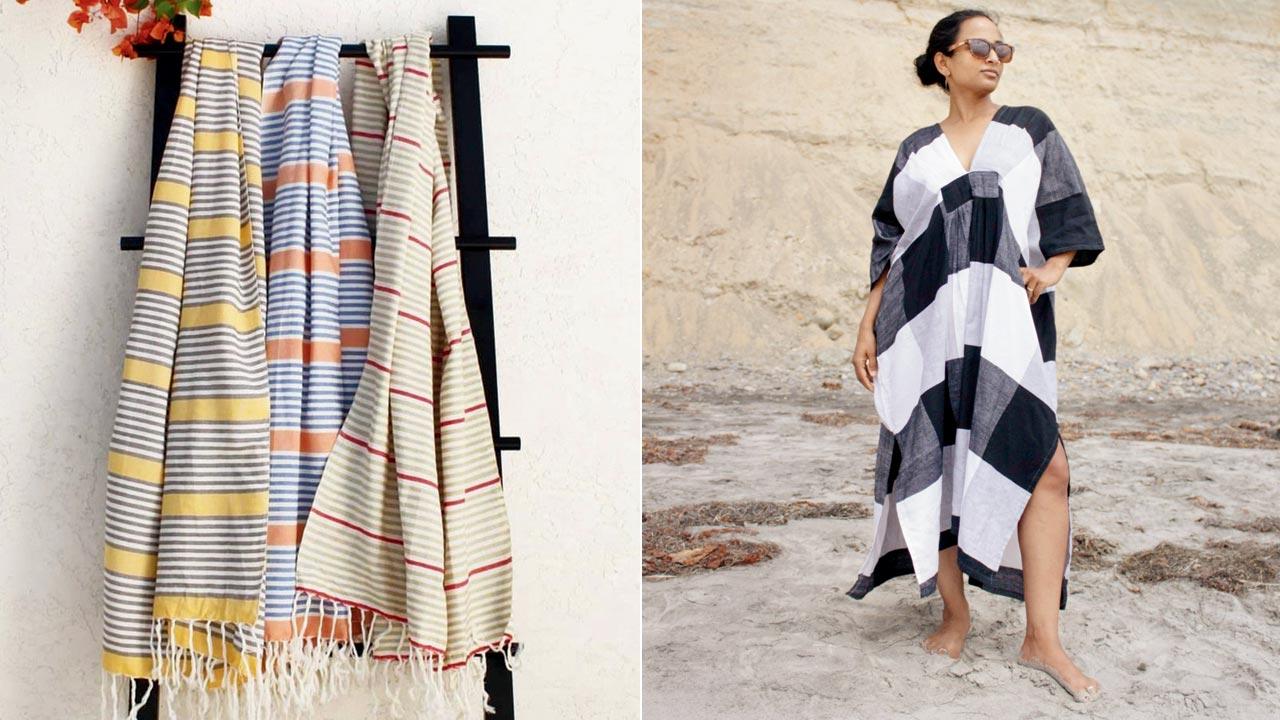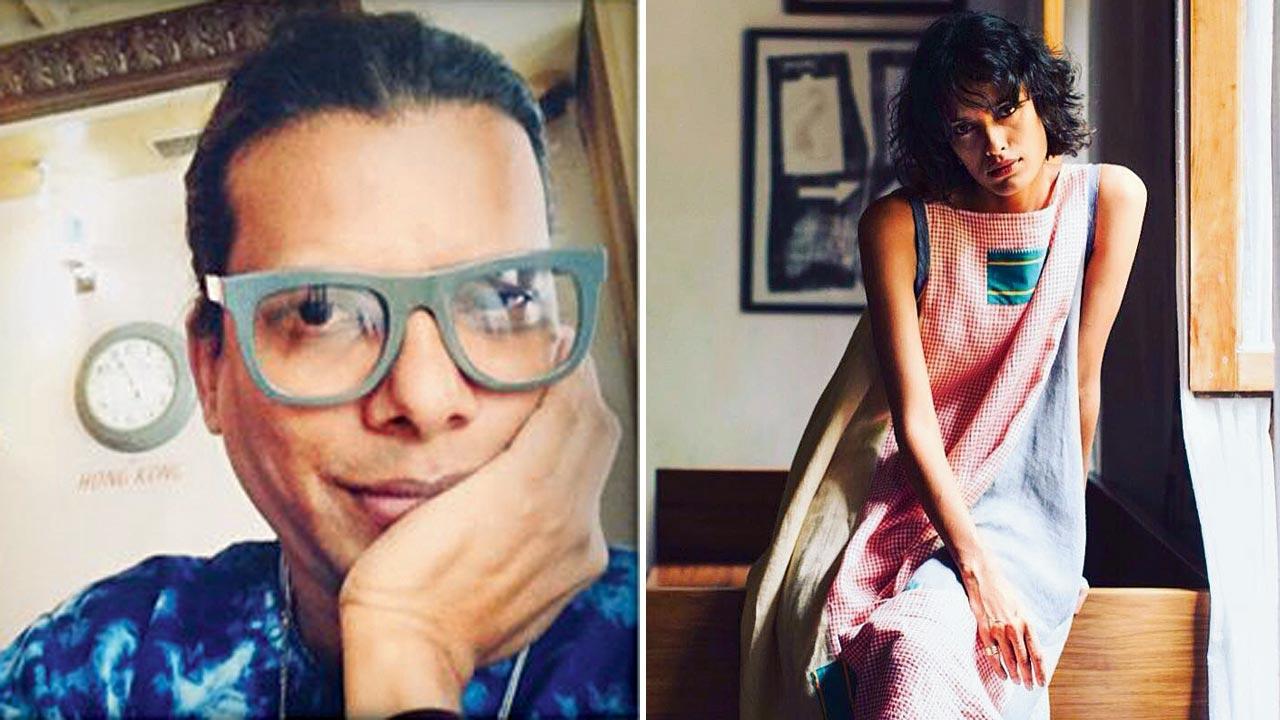After a Spanish luxury fashion house presented towel as couture, and a Swedish home solutions company rolled out an affordable alternative, the tauliya is having a fashion moment

Mid-day imagines the Mumbai version of the Balenciaga towel skirt but with a Kerala thorth bath towel knot. Illustration/Uday Mohite; Ikea made its own alternative with Vinarn (right)
 Sigmund Freud may have been right all along. He argued that dreams could be our unconscious minds giving us a glimpse into our deepest, darkest fears and desires. Of all the insecurities crowding my teenage years, none has been as frightening as the one that concerns waking up in a cold sweat to realise, I was dreaming of having left my home without getting dressed out of the towel.
Sigmund Freud may have been right all along. He argued that dreams could be our unconscious minds giving us a glimpse into our deepest, darkest fears and desires. Of all the insecurities crowding my teenage years, none has been as frightening as the one that concerns waking up in a cold sweat to realise, I was dreaming of having left my home without getting dressed out of the towel.
It turns out that the neuroses were not out of step. The Balenciaga towel skirt, showcased at the Spring 2024 Paris show, entered the popular lexicon earlier this year. It’s the work of Demna Gvasalia, the Spanish luxury brand’s creative director whose fashion holds up a mirror to what’s happening in the world, and this time, turned us directly to our own bathrooms. At first, the towel skirt seemed like another type of “stunt dressing” (a neologism that captures performative fashion) to get everyone talking.
 Indu Menon and Chitra Gopalakrishnan
Indu Menon and Chitra Gopalakrishnan
But this wasn’t just Instagram banter. Not long after the show, Balenciaga dropped the unisex, terry cotton, towel skirt with two buttons, belt and embroidered logo, on its shopping website. It’s available for pre-order at $925 (R78,000). Ikea, in a cheeky response, released its own take by way of the Vinarn bath towel (R599) on its Instagram, bringing it to the attention of a demographic that likes their high fashion at affordable prices.
Some 20 km from Kochi in Kanjiramattom, Indu Menon is wondering what the fuss is all about; after all it’s just a “thorthu” (bath towel in Kerala). “My friends forwarded pictures of the towel skirt… any odd thing becomes a trend, doesn’t it?” she says of the towel commonly known as gamcha.
 Multi-utility Kerala thorth handloom textile from Kara Weaves; (right) Queen kaftan created from Kerala’s thorth handloom textile by Kara Weaves
Multi-utility Kerala thorth handloom textile from Kara Weaves; (right) Queen kaftan created from Kerala’s thorth handloom textile by Kara Weaves
Thorth is a Malayalam word for the twin-strand basket weave bath towel found in Kerala, and it literally translates to “something that removes moisture”. Made from super absorbent, quick drying cotton and weighing around 100 gms, the thorth is probably one of the lightest, compact towels available in the world.
Social anthropologist and co-author of Women Weavers, Menon and her graphic designer daughter Chitra Gopalakrishnan founded Kara Weaves in 2007 with actor-director Revathy Menon. This WBE certified social enterprise works with handloom textiles co-operatives in Kanjiramattom and Kannur to produce thorth-based bath and home collections including robes, bath towels, tablecloths, yoga mats, cocktail napkins, kitchen towels and aprons. “We got the idea of making aprons after seeing women working in the fields with gamchas wrapped around their sarees like a sarong. Even men knot it around their trousers while helping out in the kitchen,” adds Menon.
 Lakshmi Menon in a Madras check slip dress by Saviojon Fernandes (right). Pic Courtesy/Sheetal Mallar
Lakshmi Menon in a Madras check slip dress by Saviojon Fernandes (right). Pic Courtesy/Sheetal Mallar
Eight years after they first launched, the brand moved its position of making utility items and introduced a capsule apparel range of kaftans, sarongs, wraps and crop tops. This makes 10 per cent of their entire product line. “We also collaborated with the late Wendell Rodricks on his 2012 and 2016 collections which used thorthu to make shoulder wraps and summer dresses. He understood the subtleties and the time it takes to make handloom textiles.”
A towel is the ubiquitous item of strange and varied parables in India, cutting across social parity. In any case its utilitarian purpose is only one part of its function. In the highest government offices, a towel is found draped over plush swivel chairs that seat important women and men. Some call it a colonial hangover; the British reportedly used it as a sartorial conduit to denote class and rank hierarchies.
“From using it as a headcover to a mop, its versatility makes the thorthu an indispensable item in every Malayali home. All it needed was some colour and design intervention, and clever marketing,” Menon says of their diverse contemporary product line which retails at Bloomingdale’s and Anthropology among other stores internationally.
Balenciaga is not the only brand charting course between useful and chic; Prada and Ludovic de Saint Sernin imagined the towel-as-skirt for Spring 2020. But we are here to argue that Saviojon Fernandes got there first, in the early 2000s. “It was an appliquéd safari-style shirt made from a Kerala flat towel,” the Siolim-based designer says of his creation. “I wish I had documented it! But the difference is that I had actually created something [from a towel] instead of using it as is. I really don’t get all the frenzied talk about the towel-skirt.”
It’s the ultimate punk thing to parody something so mundane (“I am fascinated by ordinary wardrobes”), things that you already own and reimagine them into streetwear-meets-conceptual fashion. With tailoring (he turned the dress upside down, literally, and gave us armholes on knees), playing with proportion (blurred lines between public and private; what ought to be concealed or revealed), using pattern cutting (darts, exposed selvedge and raw seams), and looking at everyday materials (Turkish tea towels, fishnets, gamcha, Madras checks, bandage, Arabic dishdasha, bazaar basket bags).
“To me, the appeal is to deconstruct the sexiness, to subvert it using found and forgotten materials. What can I say, I like to take a pi** out of fashion!”
 Subscribe today by clicking the link and stay updated with the latest news!" Click here!
Subscribe today by clicking the link and stay updated with the latest news!" Click here!










